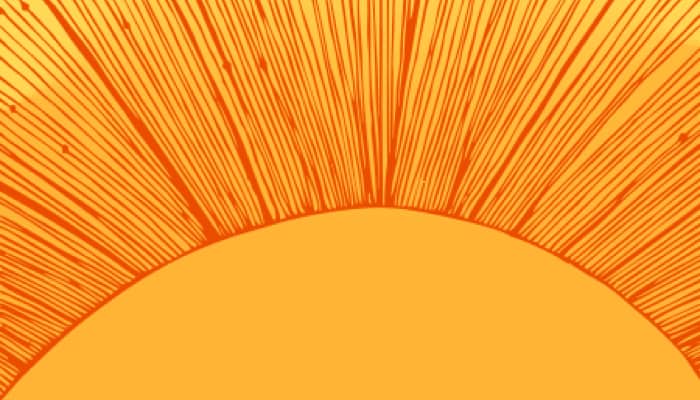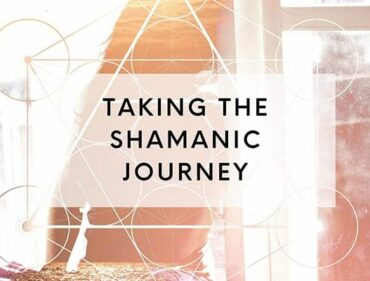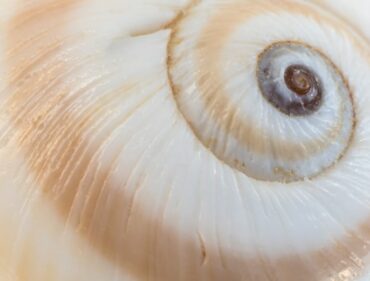Article: Energy Medicine
By Isa Gucciardi, Ph.D.
Summary: A demystifying introduction to the field of energy medicine: what it is, its history, and how it works.
We tend to think of ourselves as material beings, interacting with material objects – but if you think about it, much of your reality is strongly influenced by the unseen. Are your thoughts material? Are your emotions material? How much of your reality is influenced by your thoughts and emotions? Is there anything that you do that you have not thought about before doing? Is there anything that you do that you don’t have feelings about?
Thoughts and emotions can be looked at as pathways between the world of the unseen, sometimes referred to as spirit, and the world of the seen, or what we refer to as the material. Our body is in constant conversation with our emotions and our thoughts, even though we tend to think of the brain as the mediator of incoming information and the generator of outgoing information. Many people even believe that their emotional response to reality arises through their thinking processes – located in the brain. But if you look at expressions, both in English and in other languages, that refer to emotional states, you will see that there has been some kind of understanding about the involvement of the body as a generator and mediator of the unseen. Mal de fois, translated as “a bad liver” or “sickness in the liver” in French refers to a state of anger. Interestingly enough, in Chinese Medicine, a system of medicine which relies strongly on the redirection of chi, or life energy in the body to restore balance, the liver is understood to be the part of the body which is affected and affects the state of anger.
In Vedic science, the underlying philosophy of Ayurvedic medicine, there is a system of understanding regarding the pathways through which energy passes through the body. It defines, in detail, the energy centers in the body that mediate different types of experience and provide the organism with information about the state of the energy centers by influencing the physical state. These centers are referred to as chakras. They are non-physical in nature and align roughly with the endocrine system.
The endocrine system is one of the more intriguing systems in the body. The hormones which are secreted by and mediated by the different endocrine glands regulate, in large measure our mood, our mental states and our physical state of balance. In her book, Molecules of Emotion, Candace Pert points to poorly understood areas of the brain that produce chemical precursors to enzymes and hormones. Through her research, she observes that these chemical precursors and the patterns of their production have a correlation with thought and emotional states. She comes very close to saying that our thoughts and our emotions are producing an intermediate class of chemical substances that are the precursors of enzymes and hormones which regulate our physical being and, in turn, affect our material experience of ourselves. These conclusions have enormous implications in the understanding of physical disease. That is, that physical balance or imbalance is a function of something more subtle.
In his book, My Aching Back, John E. Sarno, neurosurgeon, outlines clearly the mental, energetic. and emotional roots of physical pain. This is a man who is trained to think empirically and rationally, and to be focused on relieving pain through the manipulation of the material. He unequivocally states that a very high percentage of physical pain in the back and spine are a result of non-physical processes held in the emotions and the mental processes. He states that he has been unable to find physical reasons for pain in surgical or medical processes. He cites instances where he has opened the body or viewed the body through body scans to correct physical imbalance and found no physical reason for the pain the person is experiencing.
In hypnotherapy, it is possible to enter into the pain the person is experiencing on a physical level to plumb the physical pain for the underlying emotional, mental, or spiritual pain. Physical pain can often be traced back through a spectrum of emotional, mental, or spiritual pain. By tracking physical pain, a progression unfolds, which can be understood, roughly as the following: if an imbalance occurs on a spiritual level and is not addressed, it will move to a mental level. If it is not addressed there, it will move to an emotional level. If it is not addressed there, it will move to a physical level, where it is very difficult to ignore.
By using hypnotherapeutic techniques to help a person explore their physical experience in an altered state, the mental and emotional configurations underlying physical pain emerge. These configurations are often revealed by returning to situations and circumstances in which these emotional configurations were developed. This is accomplished through regression techniques that can take a person far into their inner worlds to the source of the imbalance. By achieving a shift in the way the person relates to these emotional and mental configurations, a change in the physical body occurs.
Up until now we have been discussing emotions and thoughts as the main carriers of energetic processes outside the physical realm. We are less familiar with the world of spirit that emotions and mental pathways lead to. Earlier we spoke of imbalances in the spirit. How does one perceive and access these imbalances?
As William Collinge, a researcher in subtle energies, pointed out in his book, Subtle Energy, Einstein showed through physics what the sages have taught for thousands of years: everything in our material world – animate and inanimate – is made of energy and everything radiates energy. He concluded that the continuously unfolding and dynamic nature of the universe could only be understood as the work of a higher guiding intelligence of another dimension.
Physicists access the world of spirit through experimentation, deduction, and extrapolation into the non-material, based on what can be seen and measured in the material. There are other ways to access this realm which take pathways which are less palatable to the rational or conscious mind and its requirements for step-by-step procedure.
Shamans have been doing just that for millennia. Shamanism has been the basis of spiritual, medical, and social systems in most of the cultures that have ever arisen on the planet. There are many aspects to shamanic practice, but here we will focus on how shamanism views physical imbalance and how shamanic practices seek to correct it. A shaman might speak of seeing with the heart rather than the eyes. In Western culture, we might refer to this sight as a function of the sixth sense. Most people are poorly educated on the use and application of this way of seeing. But it is actually the most efficient way of perceiving the world of spirit – and it is where one can track what is occurring on a spirit level when the pathways provided by the emotions and thought processes peter out. For a shaman, all imbalances, whether they are manifesting physically, emotionally, mentally, or spiritually, arise on the level of spirit. And all imbalances are addressed there by the shaman through their command of phenomena, which can be described in a variety of ways, such as manipulation of energy fields or the interface with helping spirits.
Many esoteric traditions, such as theosophy, a system of thought developed in the late nineteenth century that synthesized many earlier esoteric and non-esoteric traditions, describes several subtle bodies associated with the physical body; namely, the etheric body and the astral body. They are described as having roughly the same shape as the physical body, but extending outward in all directions from the physical body. Huna, the shamanic tradition of Hawaii describes aka bodies, which are made from “subtle mind stuff” (the literal translation of “aka”). Healing of physical ailments is performed by the manipulation of these aka bodies by the shamans of that tradition. Max Long, an early researcher of this healing tradition in Hawaii reports an incident wherein a missionary broke his leg hiking up a mountain. A kahuna, or shaman, was dispatched, who worked with the aka, or astral body of the missionary in order to heal the leg. The missionary, who had not been able to walk, was able to stand and walk after this manipulation.
Thermographic photography reveals heat patterns in the physical body through color differentiation, and also, interestingly enough, reveals color differentiation extending out far from the body, past where the heat of the physical body emanates. These patterns of heat point to the phenomenon of the aura, which is referred to in many traditions. In petroglyphs in Australia, emanations extending from the physical body in the form of straight lines are said to refer to shamans, whose energy fields are filled with power. In Christian art, the halo around very holy personalities’ likenesses refer, again, to a power-charged, or “holy” state. These are references to the aura, an energy system that extends from the body and that clairvoyants report being able to perceive. The health of the physical body is revealed in the level of robustness of the aura, and many medical intuitives rely on the information contained in the aura to indicate the source of physical imbalance.
In sports medicine in the West, some of the most innovative and effective forms of treatment for injury, particularly muscle, joint, and fascia injury involve electromagnetic manipulation. Electrical impulses and magnetic energy fields are set up mechanically to enhance the healing time and the ultimate performance of muscles. This indicates that Western doctors do recognize the value of affecting the physical systems of the body through energetic means. Perhaps the generation of the energetic and magnetic fields by machines makes this concept of healing the physical body through non-physical means more palatable. Energy healers, such as Reiki practitioners, rely on their ability to channel energy held in symbols rather than on machines. Therapeutic touch practitioners, who are now routinely operating in Western medicine hospitals, are a little more undercover about the nature of the work, but they, too, are channeling beneficial energy into the energy systems of the body to effect physical healing. Acupuncturists rely heavily on the physical manipulation of the physical body through the placement of needles to channel and redirect energy in the body to enhance health. In China, traditionally, doctors were expected to maintain the physical health of their patients in this way, and if their patients became sick, it was considered bad form to charge their patients to help restore them to balance. This is because there was so much recognition that the proper channeling of energy through the placement of the needles should have been adequate to maintain physical health.
There are several systems of exercise for the physical body and systems of physical manipulation that are designed to assist the physical body by affecting the aura and the other energy systems of the body, including the chakra systems and the channels described by Chinese medicine. Qigong is a system of breathing and physical exercise developed in China, first by practitioners of Taoist medicine. In recent studies at the University of California at San Francisco, qigong has been proven to change the state of cancer cells in the body, by clearing and realigning the different channels through which energy flows in the body. Yoga is a system of exercise developed primarily in India, which has been prescribed by Ayurvedic medical practitioners to open or change the flow of energy through the chakra systems to the different organ systems to affect imbalance in those organs. Lu Jong is a system of exercise originating in Tibet which directs the flow of energy through the breath to different energy channels to maintain optimal physical health. Hula, a Hawaiian form of dance, is reported to have originally been a method of movement that enhanced the physical body’s alignment with the energy patterns of the aka, or astral body.
It is interesting to note that these different systems that utilize the breath and the physical body to contact and effect energy flow to enhance physical health have originated independently across vast geographic distances. Health practitioners from many different traditions have come to rely on their ability to contact the subtle energy flows in the body to help maintain physical health.
These same systems also recognize energy flows outside the physical body. The manipulation of the energy flows to effect healing is, as mentioned, the main focus of shamanic healing. Reiki, a system of energy healing mentioned earlier, is one of many forms of healing which contacts flows outside the physical body’s systems and directs those flows to enhance physical health. The flows that Reiki refers to are contacted through symbols perceived and/or assigned by a Dr. Usui, a Japanese doctor working in the late 1800’s. Initiates to the Reiki system receive an external transmission to alert them to the nature of the energy which is carried in what is perceived to be a particular ray. Other energy healing systems, including Ayurvedic medicine and several California schools of energy healing recognize the healing quality of rays carried in color. Each of the chakras are said to generate and mediate specific rays of color to maintain and enhance physical health. Colorpuncture, a California school of energy healing applies specifically colored rays to specific points on the energy meridians defined by Chinese medicine to effect physical balance. In Tibetan medicine, the rays of light are assigned different deities who then embody and act as a receptacle of information about the healing quality of each of the rays. By meditating on the nature of a particular deity, both the practitioner and the patient can access the nature of the healing offered by a particular ray. It is interesting to note that these ray systems have been perceived almost identically by practitioners operating independently in different healing systems in widely disparate geographical areas.
All of this points to the wisdom in David Ryerson’s statement: it is not that we are physical beings having a spiritual experience. It is that we are spiritual beings have a physical experience. As we begin to allow for the possibilities of the worlds that lie beyond what our five senses can perceive, those worlds open to us. These are worlds that physicists, shamans, and doctors from many non-Western traditions have been aware of for millennia. Energy medicine is a new term, but the field of knowledge it refers to and draws from is not new. It is time tested and it offers us new perspectives through which we can understand and heal ourselves.
LIKE THIS ARTICLE? SIGN UP FOR FREE UPDATES!



